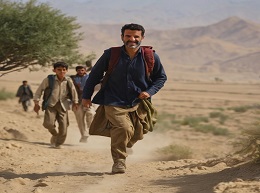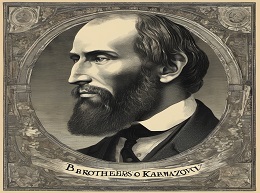The Kite Runner

"The Kite Runner" is a novel written by Afghan-American author Khaled Hosseini, published in 2003. The novel is set against the backdrop of Afghanistan's tumultuous recent history and explores themes of friendship, betrayal, guilt, and redemption. Here's a summary:
Setting:
The story is primarily set in Kabul, Afghanistan, and spans several decades, including the Soviet invasion, the rise of the Taliban, and the aftermath.
Characters:
-
Amir: The protagonist and narrator of the story, a Pashtun boy with a complicated relationship with his father.
-
Hassan: Amir's loyal Hazara friend and servant, who experiences significant hardships.
-
Baba: Amir's father, a wealthy and influential man with high expectations for his son.
-
Ali: Hassan's father and Baba's loyal servant.
-
Assef: A neighborhood bully who becomes a prominent antagonist.
Plot Summary:
-
Childhood in Kabul:
- The story begins in 1970s Kabul, where Amir, the son of a wealthy Pashtun, forms a deep bond with Hassan, a Hazara servant's son. Their friendship centers around kite-fighting tournaments.
-
Betrayal and Guilt:
- During a kite-fighting tournament, a traumatic incident occurs that alters the course of Amir and Hassan's friendship. Amir witnesses an assault on Hassan but chooses not to intervene, haunted by guilt.
-
Soviet Invasion and Escape:
- The Soviet invasion of Afghanistan prompts Baba and Amir to flee to the United States. The move challenges their social status, and Baba faces difficulties adjusting to a different life.
-
Redemption and Return:
- The novel follows Amir's journey of self-discovery and redemption. He receives a chance at redemption when he returns to Afghanistan, now under Taliban rule, to rescue Hassan's son, Sohrab.
-
Reconciliation and Sacrifice:
- Amir discovers Hassan's tragic fate and seeks to make amends by rescuing Sohrab, who has become a victim of the Taliban regime. The journey is fraught with danger, and Amir must confront his own fears and flaws.
-
The Kite Running Symbolism:
- The act of kite running becomes a powerful symbol throughout the novel, representing both the joy of childhood and the pain of betrayal. It also serves as a metaphor for Amir's quest for redemption.
-
Resolution and Healing:
- The novel concludes with a sense of resolution and healing as Amir takes responsibility for his actions and forms a connection with Sohrab.
Themes:
-
Friendship and Betrayal: The novel explores the complexities of friendship, loyalty, and the profound impact of betrayal.
-
Redemption: Amir's journey is one of seeking redemption for his past mistakes and finding a way to make amends.
-
Social Class and Ethnicity: The story delves into the societal and ethnic divisions in Afghanistan, particularly the strained relationships between Pashtuns and Hazaras.
-
Father-Son Relationships: The novel examines the complexities of father-son relationships, especially the strained connection between Amir and Baba.
Significance:
-
Critical Acclaim: "The Kite Runner" received widespread critical acclaim for its powerful storytelling, vivid characters, and exploration of complex themes.
-
Bestseller and Adaptations: The novel became a bestseller and has been adapted into a film. Hosseini's subsequent novels also received considerable attention.
-
Impact on Awareness: The novel brought attention to the plight of Afghanistan and its people, especially during periods of conflict.
-
Cultural and Literary Recognition: "The Kite Runner" is regarded as an important work that has contributed to discussions about Afghanistan and has left a lasting impact on contemporary literature.
"The Kite Runner" is a poignant and emotionally charged novel that delves into the intricacies of human relationships, personal redemption, and the impact of historical events on individuals. Its exploration of themes and the vivid portrayal of characters make it a compelling and significant work in modern literature.













